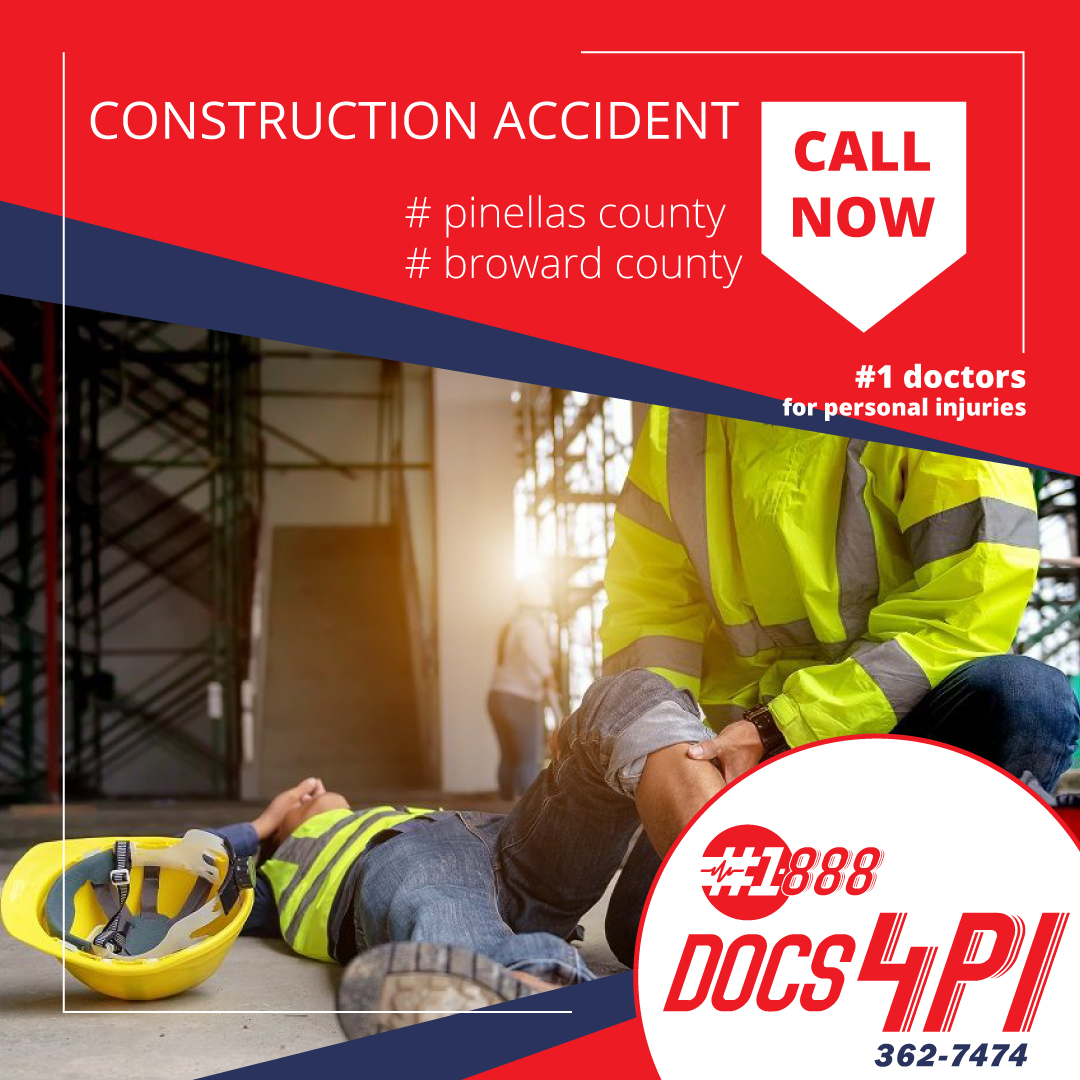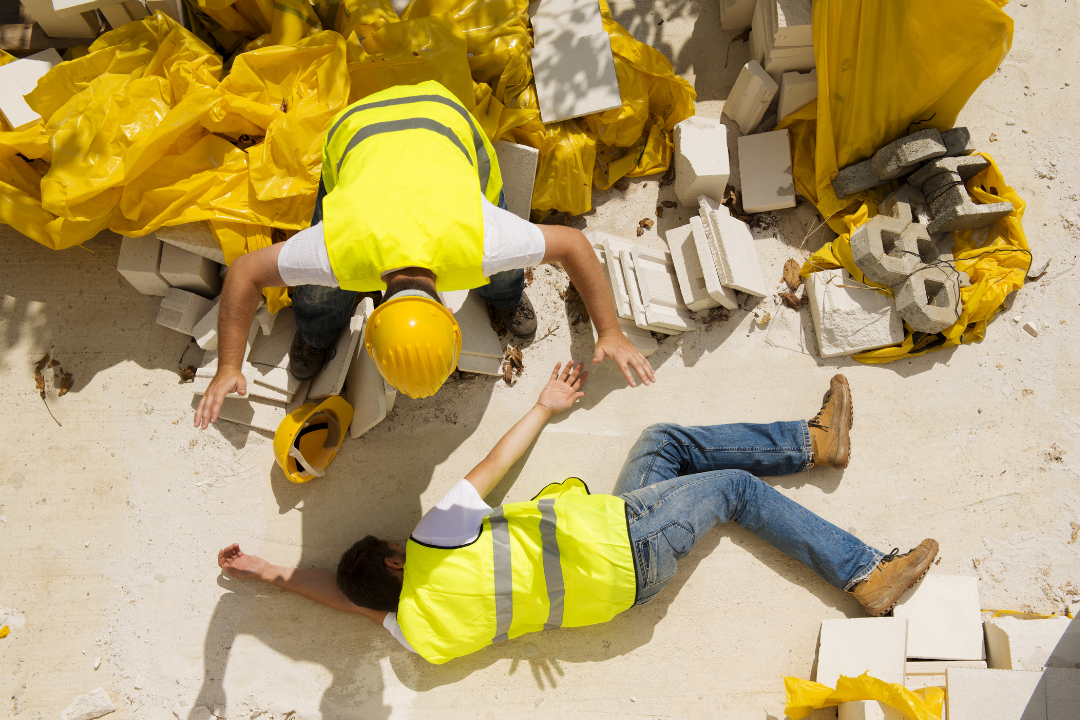
Construction sites can be dangerous places to work. The physical demands of this kind of work can be challenging. Furthermore, construction workers often use powerful machinery, climb high above ground or work by the roadside, where they could be exposed to traffic accidents. Unfortunately, construction workers face serious risks of injury due to the hazardous nature of their job. As of 2019, falls are the leading cause of work-related deaths in construction, accounting for more than one third (36.4%) of all construction fatalities. If you were hurt at work as a construction worker, you may be coping with severe medical problems, ongoing pain and financial worries due to missed work and medical bills. In Florida, construction workers who are injured on the job are protected by several laws. Understanding your rights under these laws is crucial to your physical and financial recovery. The same as workers in other fields, injured construction workers qualify for workers' compensation benefits while they are recuperating. If you're a construction worker and have been injured at your work site contact 1-888-DOCS4PI personal injury services. We provide a service that can match you with the best medical care in your region.
In this article we'll discuss OSHA regulations along with common construction site injuries and an overview of worker's compensation. Refer to the following sections:
Construction workers are protected by federal and state regulations. A large number of states have created their own standards and regulations that may be more rigorous than those of the federal government. Federal regulations are drafted and enforced by the Occupational Safety and Health Administration (OSHA). In accordance with OSHA regulations, construction workers have the right to review safety regulations and guidelines at their workplaces, to request an OSHA inspector to inspect their work sites, and to submit anonymous complaints against their employers for possible safety violations. As part of OSHA regulations, employers also must provide employees with a workspace that is free of recognized hazards, ensure that all employees are trained properly how to use safety equipment, and ensure workers are informed of applicable health and safety requirements.

According to the Occupational Safety and Health Administration (OSHA), the common causes of injuries on construction sites are:
There are two types of falls: falls from heights, which are the leading cause of construction-related fatalities, and falls on the same level , which are the leading causes of construction-related injuries. The hazards associated with a construction site are unfortunately inevitable, as there are floor and roof openings, unstable surfaces, and a reliance on scaffolds and ladders.
Between 1992 and 2005, a long-term study concluded that about 33% of fatal falls in construction happened on roofs, 18% on scaffolding, and 16% on ladders. In some of these cases, the edge of elevated work surfaces, such as roofs, scaffolds, and ladders, was left unsecured, which contributed to the fall.
Falls can be prevented by:
OSHA defines "struck by" injuries as those caused by forcible contact (such as a tool that falls from a higher level) or by impact between the injured person and an object or piece of equipment (such as being hit by a car). If tools, building materials, scaffolding pieces, or other supplies fall from significant heights onto workers, they can cause serious injuries. Wearing the appropriate protective equipment, like hardhats and safety glasses, and staying alert and aware can help prevent most "struck by" injuries.
Struck-by injuries can be avoided by clearly marked or blocked off areas. You should also:
Although electrocution can cause serious injuries such as muscle contractions, nerve damage, and cardiac arrest, burns are the most common shock-related injury. These injuries are usually caused by unsafe equipment or installations, hazardous environments, or unsafe work practices. OSHA's regulations for electrical equipment and systems cover electrical hazards, including requirements for construction and installation. Electrical injuries can be prevented with the use of insulation, guards, and protective devices as well as safe work procedures.
The following safety protocols should be followed by employees who work directly with electrical equipment:
Using heavy machinery and equipment at a construction site is another horrific risk. When the body of an employee is caught between two or more objects, it can be crushed, squeezed, compressed, or pinched. People can become trapped when materials collapse on them, a vehicle hits them against a wall, or a body part gets caught into machinery.
Maintaining awareness of surroundings and following proper guarding guidelines for equipment will help prevent these injuries. Employees should not:
Other common construction injuries include:
The majority of employers must provide workers' compensation insurance to their workers. This type of insurance covers workers who suffer all kinds of work injuries. You are covered for an injury that occurs at your place of work or anywhere else that you had to be when performing your duties. This applies even if your employer was not at fault. It also applies even if you made mistakes that caused your workplace injury, as long as you weren't intoxicated or violating company policy.
Worker's compensation covers your medical expenses. Additionally, you can receive temporary or permanent disability benefits if you are unable to work. Total disability benefits can be awarded if you are unable to work at all. You may be entitled to partial disability benefits if you have to switch to a lower-paying job due to being on restricted duty so that some of the money you lost can be recovered. In the event of a death, dependents may also receive death benefits through worker's compensation.
Workers' compensation may be your only recourse against your employer. If you are injured at work, you cannot sue your employer. Nevertheless, the scope of coverage is broad and you can file a workers' compensation claim for an accident-related injury, repetitive stress injury or toxin-related illness. Aside from workers' compensation claims (which don't cover all losses that personal injury cases will), those injured on construction sites can make the following claims:
You may be able to sue someone other than your employer if they caused your construction accident. As an example, if an architect was overseeing the project and his negligence caused your injury, you may be able to file a third-party lawsuit. In the event that a machine or tool has been faulty, you may be eligible to file a third-party lawsuit against the manufacturer. By bringing a third-party lawsuit, you can receive compensation not available through workers' compensation, such as pain and suffering compensation. To make a successful third-party claim, you will need to demonstrate negligence or that a product, machine, or tool was defective when used as intended.
If you have further questions about construction site injuries, contact 1-888-DOCS4PI personal injury services.
If you feel you were injured in an auto accident or another accident, #1-888-DOCS4PI can put you in touch with people who can provide sound help. Our service to find qualified assistance you need is a quick three-step process.
2
Upon calling #1-888-DOCS4PI, our intake coordinator will ask you a series of basic questions about your issue and the injuries you suffered as a result. This information will help us match you up with someone who has the background that fits your situation.
3
Once we have your contact information and understand what you require, we will connect you with someone who can help you with your accident or injury. It is that easy. Simplify the process by calling #1-888-DOCS4PI and using our free 24/7 helpline.